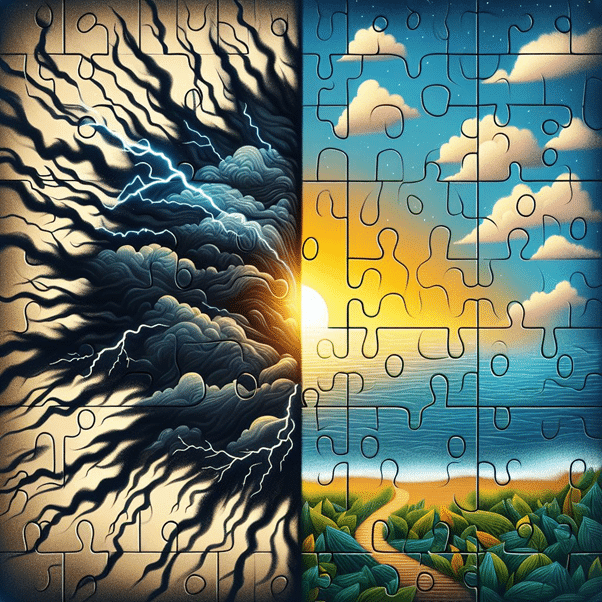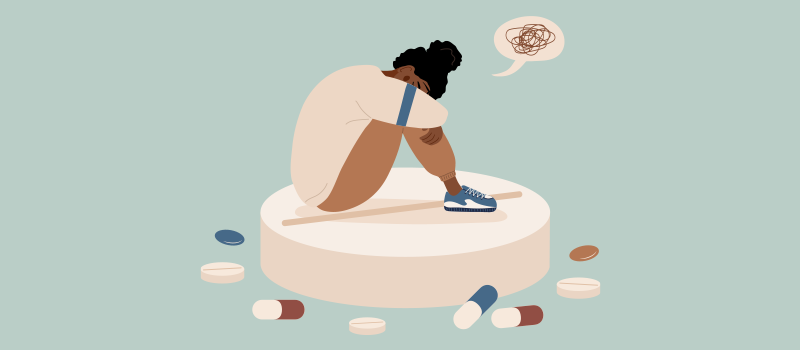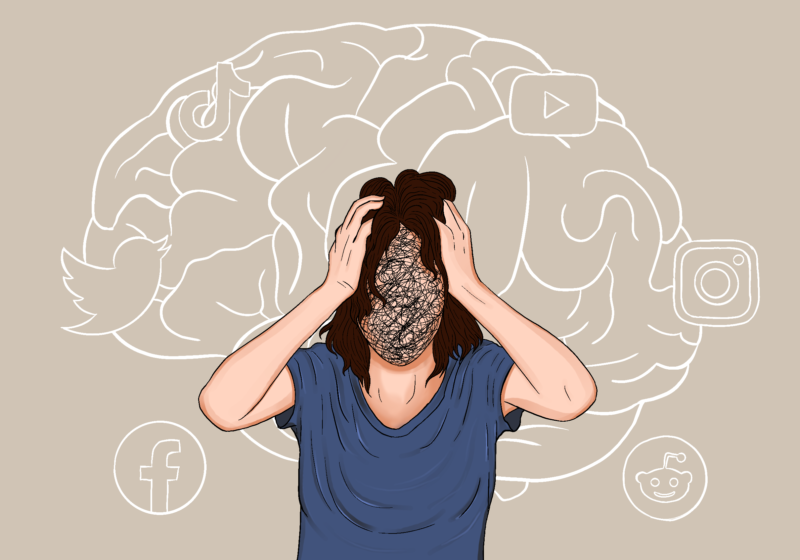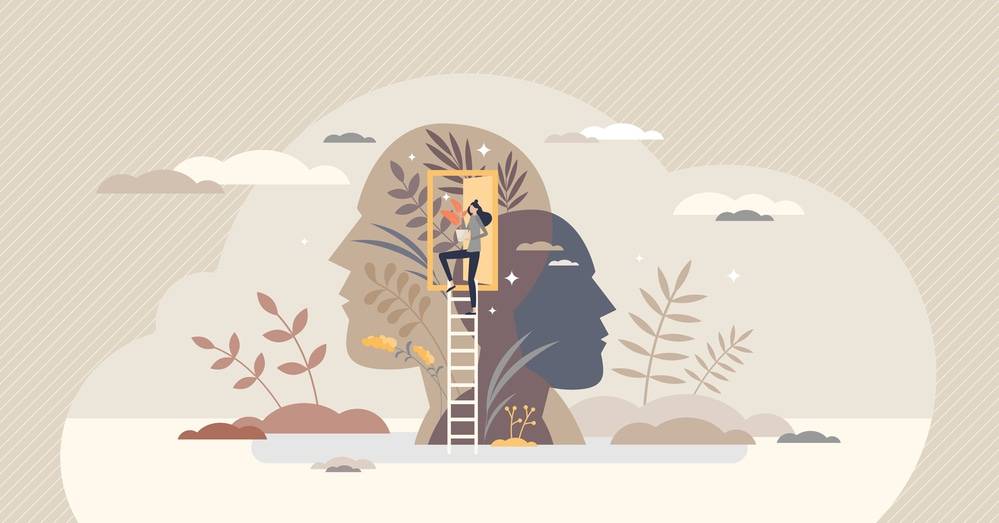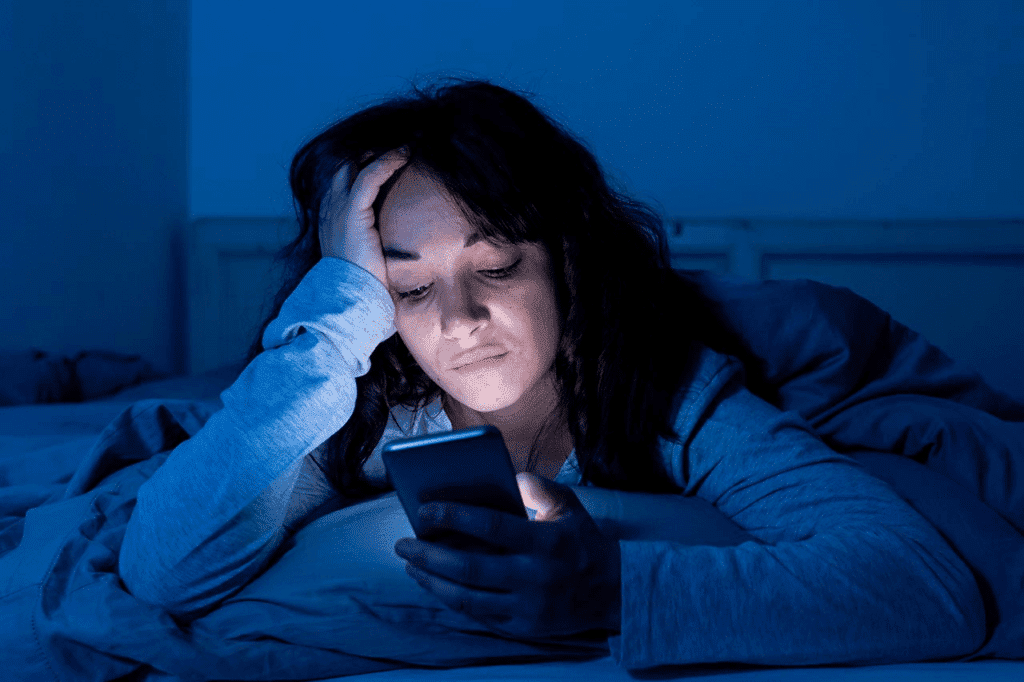Hey you. Feeling anxious lately? Not just the normal stress and worry, but intense fear and dread that disrupts your life? You’re not alone. Anxiety disorders are real and affect millions of people. The tricky thing is, that anxiety comes in many forms. Panic attacks, social anxiety, phobias – they may sound similar but have distinct symptoms and triggers. The first step to overcoming anxiety and reclaiming your life is understanding which type you or your loved one may have. This guide breaks down the basics so you can spot the signs, learn the differences, and find the right help. The path ahead may not be easy, but knowledge is power. With the right information and support, you can decode the types of anxiety and come out the other side.
What is an Anxiety Disorder?
NAMI defines anxiety as “a persistent and ongoing struggle that interferes with your day-to-day life.” Most people begin to experience anxiety symptoms during early childhood and adolescence. Often, these symptoms will persist through adulthood. It is possible to have one anxiety disorder or multiple diagnoses.
Unlike other medical and mental health conditions, anxiety is more than a singular diagnosis. Anxiety is a group of conditions, all related in some form. Each has unique symptoms but shares symptoms with other forms of anxiety as well. The most common anxiety symptom shared across all anxiety disorders is excessive, persistent fear in situations that should not provoke fear.
People with anxiety experience various emotional and physical symptoms. While symptoms may vary from person to person, most people experience irritability, feelings of dread, hypervigilance (always “on edge”), and feeling tense or jumpy. Common physical anxiety symptoms may include racing heart, insomnia, shortness of breath, stomach aches, fatigue, and sweating.
Research has not provided a sole risk factor or cause that increases one’s risk for developing an anxiety disorder. Several studies point to multiple factors, including environmental, genetic, and biological factors. Other factors include trauma, illness, and ongoing substance abuse.
What are the Different Types of Anxiety Disorder?
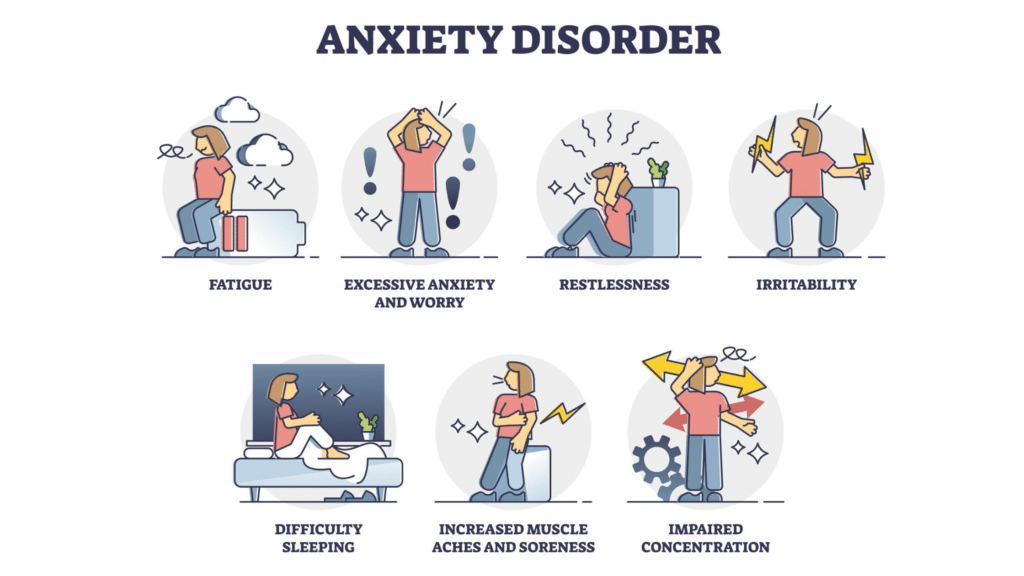
The Diagnostic and Statistical Manual for Mental Disorders or DSM is a manual used
by the mental health community to assess and diagnose the presence of a mental health condition. The DSM provides several criteria used by members of the treatment teams at Liberty House to understand anxiety disorders’ symptoms and the best treatment methods. Several types of anxiety disorders are listed in the DSM; however, five are more common than others.
Generalized Anxiety Disorder (GAD)
When you struggle with generalized anxiety disorder, you will experience frequent anxiety symptoms virtually every day. Often, feelings of tension and heightened worry are present even when there is no “reason” to be fearful.
Obsessive-Compulsive Disorder (OCD)
Obsessive-compulsive disorder or OCD is characterized by two primary symptoms; obsessions and compulsions. Obsessions are recurrent and unwanted thoughts that often “cause” someone with OCD to engage in compulsions. Compulsions are repetitive behaviors that people recognize as hallmark OCD symptoms. Compulsive behaviors may include actions like checking, counting, or even hand washing. To alleviate the intensity and severity of obsessions, individuals may engage in compulsions or rituals. These actions are carried out consistently and can be time-consuming, leading to significant interference with one’s daily life. While they only provide temporary relief, failure to perform them often worsens anxiety.
Panic Disorder
Panic disorder is a type of anxiety disorder marked by sudden and repeated panic attacks. These intense periods of fear or discomfort come on quickly and can last anywhere from a few minutes to an hour. Symptoms of a panic attack include sweating, shaking, chest pain, shortness of breath, dizziness, and a sense of impending doom.
While panic attacks can occur in anyone, those with panic disorder experience them more frequently and often have a fear of having another panic attack. This fear can cause individuals to avoid certain situations or places, leading to social isolation and a lower quality of life.
The exact reasons for panic disorder are not completely clear, but research indicates that genetics, brain chemistry, and life stressors might contribute to its development. Treatment options include cognitive-behavioral therapy, medication, and relaxation techniques.
Post-Traumatic Stress Disorder (PTSD)
Post-traumatic stress disorder (PTSD) is a type of anxiety disorder that can develop after experiencing or witnessing a traumatic event. Symptoms of PTSD include flashbacks, nightmares, avoidance of triggers, and hyperarousal.
PTSD can significantly impact an individual’s personal and professional life, leading to feelings of isolation and a lower quality of life. The causes of PTSD are not entirely understood, but research suggests that genetics, brain chemistry, and life experiences may play a role. Treatment options include cognitive-behavioral therapy, medication, and exposure therapy.
Social Phobias
Social anxiety disorder, or social phobia, is a type of anxiety where people feel extremely scared in social situations. Those with this disorder may worry a lot about being judged, embarrassed, or humiliated. This can make them avoid social situations entirely.
Symptoms of social anxiety disorder include blushing, sweating, trembling, nausea, and difficulty speaking. The fear of social situations can significantly impact an individual’s personal and professional life, leading to feelings of isolation and a lower quality of life.
The exact reasons behind social anxiety disorder aren’t completely clear, but studies indicate that factors like genetics, brain chemistry, and life experiences might contribute to it. Treatment options include cognitive-behavioral therapy, medication, and exposure therapy.
Specific Phobias
Specific phobias are a type of anxiety disorder characterized by an intense and irrational fear of a particular object or situation. Common phobias include heights, spiders, flying, and enclosed spaces. The fear is so severe that individuals may go to great lengths to avoid the object or situation, leading to a lower quality of life.
Symptoms of specific phobias include sweating, trembling, rapid heartbeat, and a sense of impending doom when exposed to the feared object or situation. The causes of specific phobias are not entirely understood, but research suggests that genetics, brain chemistry, and life experiences may play a role. Treatment options include cognitive-behavioral therapy, exposure therapy, and medication.
Symptoms of Various Anxiety Disorders: Physical, Emotional, and Behavioral
Anxiety disorders can manifest in a variety of ways. Some symptoms are physical, while others are emotional or behavioral. Recognizing the signs can help determine the specific type of anxiety disorder and find the appropriate treatment.
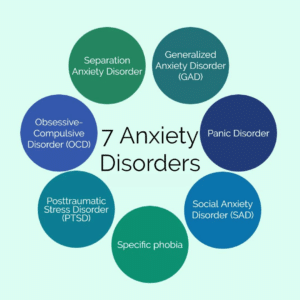
Physical Symptoms
You may experience headaches, nausea, sweating, trembling, and difficulty breathing. Chest pain, pounding heart, and hot or cold flashes are also common. These physical effects stem from the fight or flight response, as your body perceives danger.
Emotional Symptoms
Feeling restless, irritable, and unable to concentrate are frequent signs. You may have excessive worry, dread, and difficulty controlling feelings of panic. Trouble sleeping due to racing thoughts and a sense of impending doom are also common experiences.
Behavioral Symptoms
Social withdrawal, inability to fulfill responsibilities, and decreased ability to perform daily activities can occur. You may engage in compulsive behaviors to reduce anxiety like excessive hand washing or checking locks. Avoiding triggers of anxiety and situations where anxiety arises is another behavioral symptom.
Getting professional help, like cognitive behavioral therapy, mindfulness practices, or medication if needed, can effectively treat anxiety disorders. Recognizing the various signs of different anxiety disorders is the first step to getting the help you need and finding greater peace of mind.
Causes and Risk Factors: Genetics, Brain Chemistry, Life Events
Genetics, brain chemistry, and stressful life events are major contributors to the development of anxiety disorders. Your genes can make you more prone to anxiety, especially if you have close family members with an anxiety disorder. Anxiety disorders often have a family connection, with genetics playing a role in 30-50% of the risk of developing such conditions.
Your brain chemistry, specifically neurotransmitters like serotonin that regulate mood and stress responses, also plays a role. Imbalances in these chemicals can heighten your sensitivity to anxiety and make symptoms worse. Environmental factors, trauma, medical issues, and lifestyle can further impact your brain chemistry and the likelihood of anxiety.
Difficult life events such as the loss of a loved one, financial troubles, health issues, or other traumas may trigger the onset or relapse of anxiety symptoms in susceptible individuals. However, anxiety disorders are not caused by stressful life events alone. Genetics and brain chemistry combine with these influences to shape your risk.
Nature and Nurture
Anxiety disorders arise from a blend of inherited traits (nature) and life experiences (nurture). Your genetic makeup can influence how sensitive you are to stressful life happenings, Impacting your mood and mental health. While you can’t change your genetics, you can build resilience through self-care, therapy, and learning coping strategies. Understanding how nature and nurture intersect for you is key to effective treatment and prevention.
The causes and risk factors underlying anxiety disorders are complex and varied. By understanding how genetics, brain chemistry, and life events interact in a person’s life, we can identify the most effective support strategies. Treatment often involves medication, therapy, lifestyle changes, and learning skills for managing stress and anxious thoughts. With compassion and the right resources, anxiety disorders are highly treatable.
Treatment options for anxiety disorders
Treatment options for anxiety disorder depend on the type and severity of the disorder. Common treatments include psychotherapy, medication, and relaxation techniques.
Psychotherapy, also known as talk therapy, involves working with a trained mental health professional to identify and change negative thought patterns and behaviors. Cognitive-behavioral therapy (CBT) is a popular type of psychotherapy that involves identifying and changing negative thought patterns and behaviors.
Medications for anxiety disorders include antidepressants, benzodiazepines, and beta-blockers. Antidepressants ease generalized anxiety and panic disorders, benzodiazepines address panic disorder and specific phobias, and beta-blockers are prescribed for social anxiety disorder.
Relaxation techniques such as deep breathing, meditation, and yoga can also help manage anxiety symptoms. These techniques can help reduce stress and promote feelings of calmness and relaxation.
Possible Diagnosis and Treatment Plans
Based on the assessment, the doctor can determine if you meet the criteria for a specific anxiety disorder like:
- Generalized Anxiety Disorder (GAD): Excessive, uncontrollable worry and tension
- Social Anxiety Disorder: Fear of social interactions and being scrutinized by others
- Panic Disorder: Recurrent panic attacks that cause a fear of the attacks themselves
- Phobias: Irrational fear and avoidance of specific objects or situations
An official diagnosis is the first step toward developing an effective treatment plan, which may include therapy, medication, lifestyle changes, or a combination. The doctor can recommend options based on the type and severity of your anxiety. With the right treatment and support, anxiety disorders are very manageable conditions.
The most important thing is not to lose hope. Help is out there, and with work, you can gain control over your anxiety and start living life fully again.
Therapy
Cognitive behavioral therapy (CBT) is one of the most popular treatments for anxiety. It helps you identify negative thought patterns and replace them with more constructive ones. CBT can be highly effective for many anxiety disorders, especially social anxiety disorder and panic disorder.
Medication
Antidepressants and anti-anxiety medications are frequently prescribed for anxiety disorders. Common options include selective serotonin reuptake inhibitors (SSRIs), serotonin and norepinephrine reuptake inhibitors (SNRIs), and buspirone. Benzodiazepines may be used short-term but can be addictive if used long-term. Medication can help reduce symptoms so you can fully benefit from therapy and lifestyle changes.
Finding the Right Mental Health Professional: Questions to Ask
When seeking mental health support, finding a professional you trust and connect with is key. Asking the right questions can help determine if a therapist is the right fit for you.
Some key things to inquire about are:
- Their credentials and experience. Are they licensed in your state? How long have they been practicing? Do they have experience treating your specific condition?
- Their approach. Do they use cognitive behavioral therapy, mindfulness techniques, medication, or a combination? Make sure their methods align with your needs and preferences.
- Their availability and policies. Do they have evening or weekend hours if needed? Do they charge on a sliding scale? Do they accept your insurance? These logistical factors are important to understand upfront.
- How they measure progress. Ask how they will work with you to establish treatment goals and benchmarks for improvement. Look for specific, measurable ways to track your progress, not just vague statements.
- Their strengths and limitations. No therapist is perfect for every client. Ask about the types of issues or disorders they feel most and least competent to address. Make sure they feel fully capable of supporting you.
- How they handle challenges. Discuss how they have helped clients in crisis situations or when treatment wasn’t progressing. Look for a willingness to reassess the approach or refer out if needed.
- How they protect your privacy. Understand their policies around confidentiality, sharing details with physicians or family, and handling emergency situations. Your privacy should be a top priority.
- Their fit and rapport with you. The most important factor is whether you feel respected, supported, and able to openly share with this professional. Don’t feel obligated to continue with a therapist you don’t fully trust or connect with.
By asking thoughtful questions and closely listening to the answers, you can figure out if a particular mental health professional is the best match to support you on your path to well-being. Finding the right fit can truly make a significant impact.
How to Find Anxiety Treatment in New Jersey
If you or a loved one struggles with anxiety, seeking help at an anxiety treatment center in New Jersey can help. Our team of caring and compassionate treatment providers at Relevance Recovery is here to help you understand the challenges that lie at the root of anxiety so you can begin your journey to healing. Don’t let struggles with anxiety steal another day. Contact a member of our admissions team today to learn more about anxiety treatment at Relevance Recovery.

